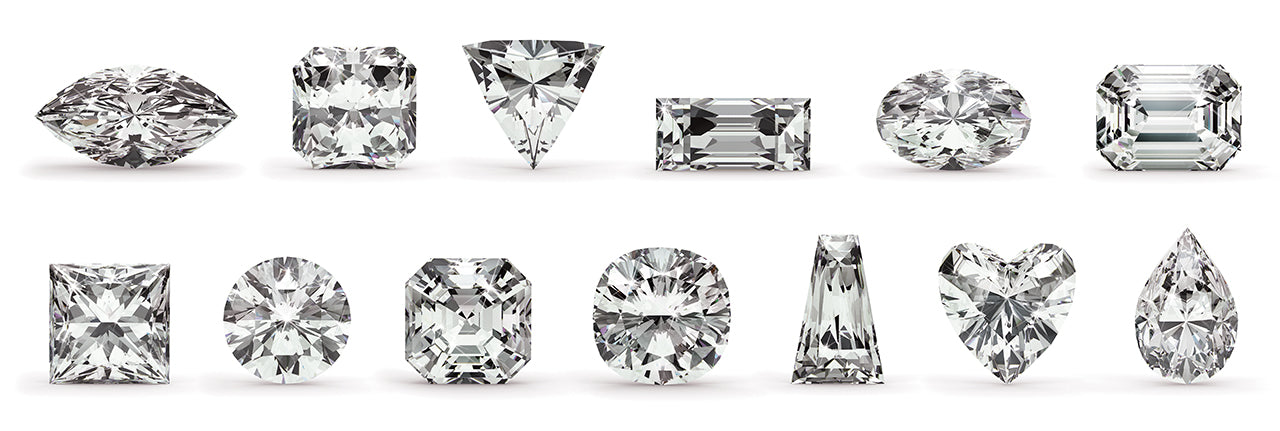Loose Diamonds at Polacheck's Jewelers in Calabasas, CA
Are you looking for the perfect diamond?

Each diamond is unique and is a miracle of time, place, and change. In order to establish a diamond’s value, specific qualities must be taken into consideration.
Until the middle of the twentieth century, there was no agreed-upon standard by which diamonds could be judged. The Gemological Institute of America (GIA), is a nonprofit institute dedicated to research and education in the field of gemology and the jewelry arts. Founded in 1931, their mission is to protect all buyers and sellers of gemstones by setting and maintaining the standards used to evaluate gemstone quality. In the 1950’s, GIA created the first, now globally, accepted standard for describing diamonds: Diamond 4Cs and the International Diamond Grading System™.
Today, the 4Cs of diamond quality is the universal method for accessing the value of any diamond, anywhere in the world. The creation of the diamond 4Cs meant two very important things: diamond quality could be communicated in a universal language, and diamond customers could now know exactly what they were about to purchase.
It’s time to learn vocabulary that is used daily when it comes to understanding diamonds.
COLOR
Color is a measure of how much color (e.g., yellow, brown, etc) is present in the diamond. More desirable stones are colorless, aka void of any color; they're also rarer and therefore more valuable (and pricey). The goal is to purchase a diamond that is almost perfectly clear or at least to the naked eye. At Polacheck’s Jewelers, our standards of color are very high, and we typically carry diamonds within the D – J range on the GIA color grading scale.
The difference between each color grading is very slight to the unaided eye, and a well-cut diamond can appear to have less color than it actually does.

CUT
A well-cut diamond acts as a prism, splitting white light into a brilliant rainbow of colors. If a diamond is cut well, the angles are positioned just right so that light enters and leaves the diamond in the most brilliant way. The better the cut means more sparkle. To us, it's one of the most important factors when considering any stone. When stones are cut too deep or too shallow to maximize size, the diamond is less sparkly and can often look dull.

Some experts believe cut has the biggest impact on a diamond's beauty. Cut reflects the quality of a stone's proportions, symmetry and polish, which combine to create the ideal combination of light return, sparkle and fire-of course, there is no single ideal set of proportions, but certain minimum standards of excellence regarding a stone's roundness, depth, width, uniformity of facets and quality of finish are considered when assigning a cut grade. The GIA diamond cut grading system ranks cut for round brilliant diamonds (the most common cut) on the following scale: "excellent," "very good," "good," "fair" and "poor."
CLARITY
The clarity of a diamond describes the inherent imperfections or flaws of the stone. These different flaws can be things such as dark spots, feathery cracks, or white points in the loose diamond. While flawless diamonds are the rarest, a diamond does not have to be flawless in order to be stunning. A lot of times these flaws are almost impossible to see with the naked eye.
Here is the GIA's clarity scale for evaluating diamonds:

CARAT
Carat is the measure of a diamond’s weight, not size. Two 1-carat diamonds can look very different based on the cut of the stones. Diamond cutters are given the opportunity to cut a diamond as big as they can to maximize weight or as beautiful as they can to maximize performance. The trick is to find the right balance of carat weight and cut. For example, a 1ct and a 3ct diamond can look exactly the same from the top.
Although diamonds are graded by very strict standards, each one is unique, and the only way to truly compare two stones is to look at them side by side.


